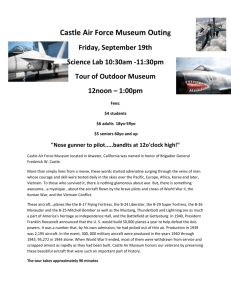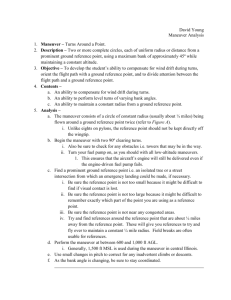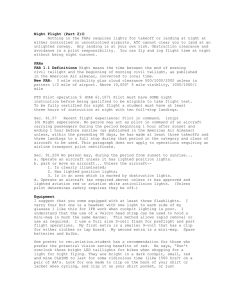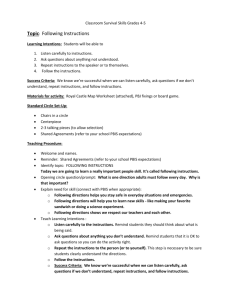April_2015 - First Flight Corp.
advertisement
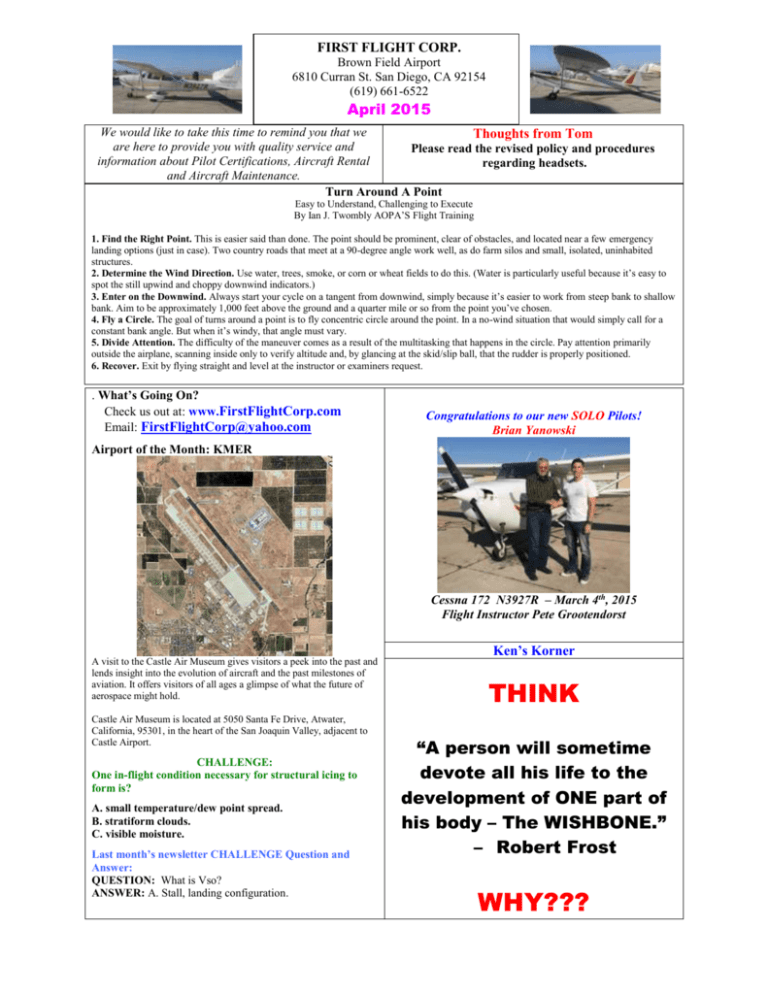
FIRST FLIGHT CORP. Brown Field Airport 6810 Curran St. San Diego, CA 92154 (619) 661-6522 April 2015 We would like to take this time to remind you that we Thoughts from Tom are here to provide you with quality service and Please read the revised policy and procedures information about Pilot Certifications, Aircraft Rental regarding headsets. and Aircraft Maintenance. Turn Around A Point Easy to Understand, Challenging to Execute By Ian J. Twombly AOPA’S Flight Training 1. Find the Right Point. This is easier said than done. The point should be prominent, clear of obstacles, and located near a few emergency landing options (just in case). Two country roads that meet at a 90-degree angle work well, as do farm silos and small, isolated, uninhabited structures. 2. Determine the Wind Direction. Use water, trees, smoke, or corn or wheat fields to do this. (Water is particularly useful because it’s easy to spot the still upwind and choppy downwind indicators.) 3. Enter on the Downwind. Always start your cycle on a tangent from downwind, simply because it’s easier to work from steep bank to shallow bank. Aim to be approximately 1,000 feet above the ground and a quarter mile or so from the point you’ve chosen. 4. Fly a Circle. The goal of turns around a point is to fly concentric circle around the point. In a no-wind situation that would simply call for a constant bank angle. But when it’s windy, that angle must vary. 5. Divide Attention. The difficulty of the maneuver comes as a result of the multitasking that happens in the circle. Pay attention primarily outside the airplane, scanning inside only to verify altitude and, by glancing at the skid/slip ball, that the rudder is properly positioned. 6. Recover. Exit by flying straight and level at the instructor or examiners request. . What’s Going On? Check us out at: www.FirstFlightCorp.com Email: FirstFlightCorp@yahoo.com Congratulations to our new SOLO Pilots! Brian Yanowski Airport of the Month: KMER Cessna 172 N3927R – March 4th, 2015 Flight Instructor Pete Grootendorst A visit to the Castle Air Museum gives visitors a peek into the past and lends insight into the evolution of aircraft and the past milestones of aviation. It offers visitors of all ages a glimpse of what the future of aerospace might hold. Castle Air Museum is located at 5050 Santa Fe Drive, Atwater, California, 95301, in the heart of the San Joaquin Valley, adjacent to Castle Airport. CHALLENGE: One in-flight condition necessary for structural icing to form is? A. small temperature/dew point spread. B. stratiform clouds. C. visible moisture. Last month’s newsletter CHALLENGE Question and Answer: QUESTION: What is Vso? ANSWER: A. Stall, landing configuration. Ken’s Korner THINK “A person will sometime devote all his life to the development of ONE part of his body – The WISHBONE.” – Robert Frost WHY???


